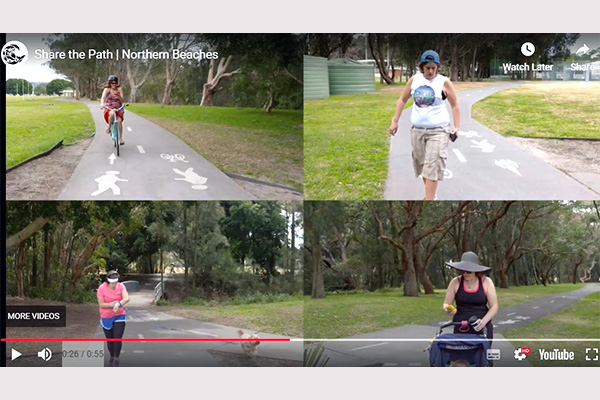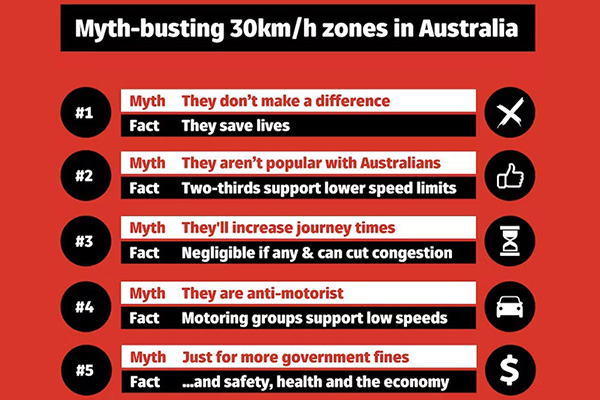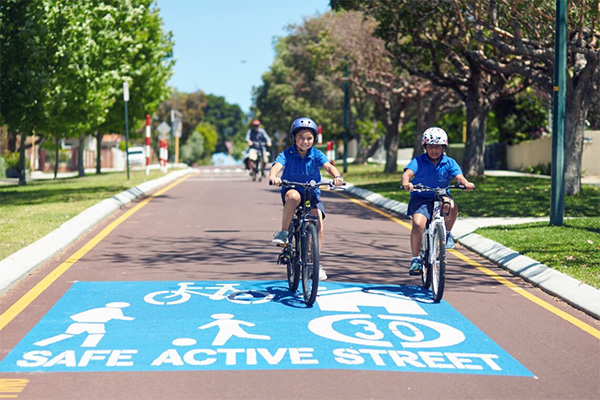If you see a bicycle rider going too fast on a shared path, tell them to slow down!
This excellent video from Northern Beaches Council alerts different path users to their responsibility to share the path safely. https://youtu.be/DrevqKZzGvU (Source: Northern Beaches Council). For more information about issues with shared paths go to Shared paths - Bicycle riders - Staying safe - NSW Centre for Road Safety
A pedestrian was tragically killed when a bike rider collided with him on the Regent St shared path in Chippendale, Sydney.
This tragedy highlights that bikes need to be super careful on shared paths and give way to pedestrians. However, it also highlights the criminal lack of adequate active travel infrastructure, placing vulnerable road users at risk. Whilst individual bicycle riders must remain vigilant and call out dangerous riding wherever it occurs, we must collectively advocate for better infrastructure and fair allocation of road space. Because at the moment it is far from fair.
The current state of our streets is grossly unsupportive of active transport and 80% dominated by vehicles.
This untenable situation is not only unsafe, it’s extremely undemocratic. Streets have become car-centric rather than walkable, liveable places. Because our streets are dangerous by design they’re unforgiving of human error. As an example, last year 1187 people died in traffic violence. 144 were pedestrians. And we know that with Better Streets these wretched numbers go right down.
Slip lanes would never exist if we prioritised safety over speed. Slip lanes increase the distance that people have to cover to cross a street, put people into spots that are often the hardest for drivers to see, and encourage drivers not to slow down when approaching an intersection and a pedestrian crossing—the precise moment they should be the most careful. Intersections should be designed to accommodate safe pedestrian crossings using tight curb radii, shorter crossing distances, and other urban design interventions. (Source: Strong Towns)
Other countries have almost achieved their Vision Zero goals by prioritising pedestrians and cyclists above cars.
Oslo actually achieved Vision Zero.
Until the 1990s Norwegian cars enjoyed unrestricted access to the capital. But then a radical overhaul saw improvements in the nation’s health, safety and beauty of urban spaces. Over a period of decades, Oslo began closing off streets in the CBD to cars entirely and removed 760 on-street parking spots inside the city’s inner ring road. Using the space reclaimed from moving and parked vehicles, the city installed cycling lanes, benches and miniature parks. A key component of this transformation process was in slowing traffic to 30 km/h.
When planners say shared paths, we say: separated cycleways on major corridors and 30 km/h on non-arterial streets.
Why 30? Because speeds above 30km/h on local roads and high streets are extremely unsafe and therefore restrictive to active travel. 30km/h is the threshold above which the probability of death due to crash forces rises exponentially: At 30km/h your chance of surviving getting hit by a car is 90%. However, for every 10km above 30km/h, your chances of survival halve.
A graphic from a great article by Matthew MacLaughlin in The Conversation that sets out the urgent case for Australian states and territories to introduce 30km/h speed limits and create streets that are safe, accessible and enjoyable. (Source: Matthew MacLaughlin)
30 km/h enables kids to safely walk, wheel and roll to school without having their hands held by terrified parents.
And 30km/h means healthier, happier kids, achieving socially and academically. Because, rather than scrolling in the back of a car, they’re activated physically and mentally at the most crucial developmental stage in their lives. In addition, our kids are not condemned to a reduced lifetime of obesity and preventable diseases such as diabetes.
A Safe Active Street in Perth, Western Australia, combines multiple urban design features, traffic filtering and 30 km/h speed limits to reduce traffic impacts and danger and dramatically improve amenity.
(Source: West Australian Department of Transport)
For more information about the Australian advocacy campaign for 30 km/h speed limits, please head to 30please.org
Join Bicycle NSW now! Add your voice to our campaign for Better Streets. Donate to the Environmental Trust which funds our advocacy campaigns for safer infrastructure.





